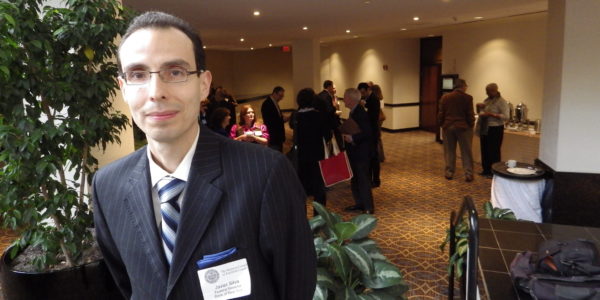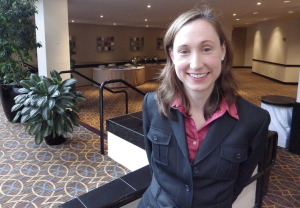
The Federal Reserve Bank of New York teamed with The Business Council of Fairfield County recently for a breakfast meeting that drew 64 ”” a sellout ”” to the Sheraton Stamford Hotel. The topic was nonbank lending options for small businesses, particularly for those seeking less than $100,000.
“A lot of companies aren”™t looking for it,” Gary Breitbart, director of growth company adviser services for the business council, said of the budding availability of alternative credit. “There are a lot of reasons today to look for alternative methods of funding.”
In turn, participants on two panels related how they either loaned or received funding outside traditional lending avenues. All agreed the current loan system caters to multimillion-dollar players more than to the businessperson, say, with the microchip that can sniff chemicals on a battlefield and potentially diagnose diseases through the chemical traces in breath. All also agreed change is coming and more activity like theirs is on the horizon.
That sniffing microchip, a proprietary technology of Norwalk-based Owlstone Inc., with research and manufacturing facilities in Cambridge, U.K., is the brainchild of CEO Bret Bader, who told how his idea has garnered 250 investors, but involved “so many struggles.” His company employs 50 and was just named one of three awardees of a $500 million Department of Defense contract. Among the tricks of Owlstone”™s 18 established and pending patents is reprogrammability.
Yet for all its obvious ”” and now realized ”” potential, Bader, like others who spoke, told initially of tapping family and friends for money.
The lenders spoke under the banner “New Products from New Players (Non-Bank Lenders),” with Breitbart moderating. The panelists were Andrea Gellert, senior vice president of marketing, Web-based small-business lender OnDeck Capital Inc; Nathaniel Cotanch, head analyst at New York City-based startup investing company Onevest; and Walter Booker, senior vice president of partnership development, New York City-based Fundation Group LLC, which claims, “All the benefits of a bank loan. None of the hassle.” Booker showed pictures of his big family ”” “our Brady Bunch” ”” to remind the attendees that family was at the core of good business decisions.

The panel, titled “Show Me the Money: How Local Small Businesses Sourced Capital,” featured regional success stories Peyman Zamani, CEO, Bridgeport-based Logicbroker; Oji Udezue, founder and CEO, Mingl; and Bader from Owlstone. The moderator was Emily Carter, statewide director, Connecticut Small Business Development Center.
The event was also an information-gathering session for the Federal Reserve Bank of New York. Speaking beforehand, New York Fed Associate Director Javier Silva said it was a follow-up to the Fed”™s small-business credit survey released in the spring. Two other events ”” in the Bronx and at the New Jersey Institute of Technology in Newark ””will serve the same purpose as the Business Council event.
“We”™re here to listen and to fill in the gaps and to share the results of the small-business survey,” Silva said.
Claire Kramer, assistant vice president at the New York Fed in its Outreach and Education Department, said loans under $100,000 were “the classic small-business credit need” now and in recent history.
“It is typically for working capital,” Kramer said. “How can I bridge this situation? It”™s about money flow and it is very consistent across the five years of the survey.”
Kramer”™s interest with the Fed is local and consumer credit and local small-business credit availability. “Part of our mission has been to help small businesses thrive,” she said. “For the last three years there has been a push to grow and thrive in Connecticut and today is an outgrowth of that effort.” Only Fairfield County is part of the New York Fed in Connecticut; the remainder of the state is in the Boston Fed zone.
“Unlike large loans, which have recovered, small ones have remained flat,” Kramer said.
She echoed Breitbart on availability, saying, “There is a great deal of innovation in the credit markets. There is a lot of information out there, but a lot of businesspeople are underinformed about it.”
The survey uses the Small Business Administration definition of small business, with fewer than 500 employees and less than $5 million in annual revenue. Silva said most of the businesses had about 50 employees.
Among the Fed survey data: 46 percent of small-business owners ”” the largest cohort ”” will not apply for credit this year, while 37 percent planned to seek loans. Of the “yeses,” 14 percent were new applicants and 23 percent were re-applicants. In 2013, 40 percent of small business applied for credit and 57 percent did not (3 percent unsure).



















Comments 2